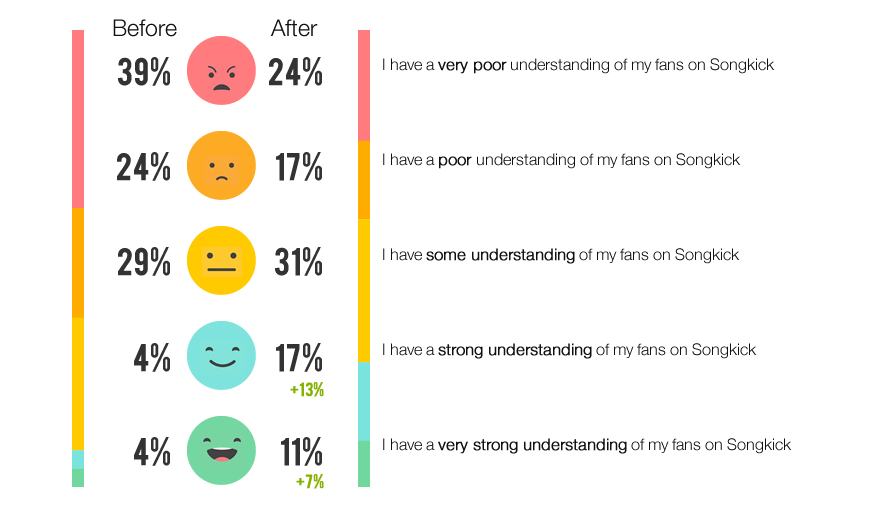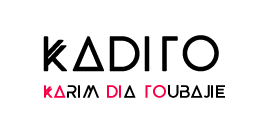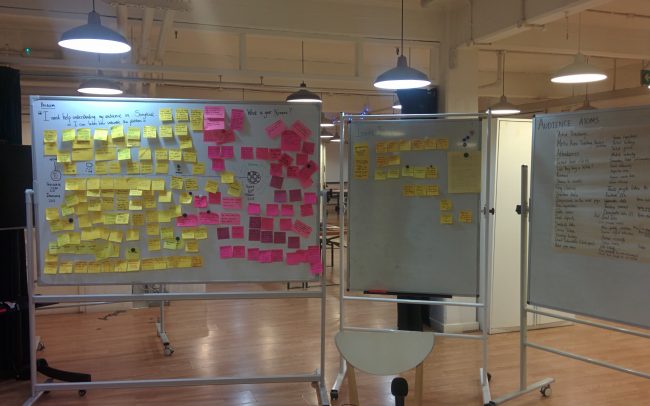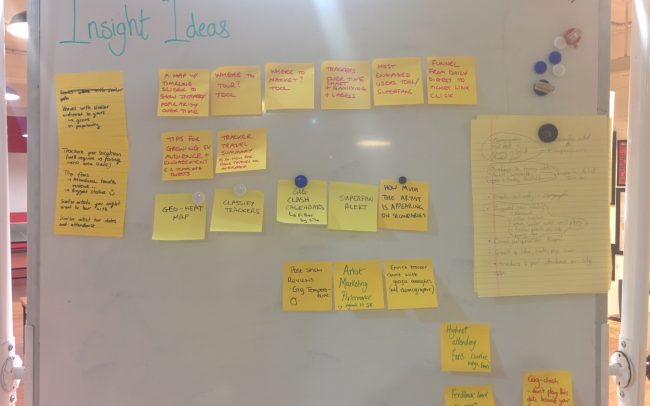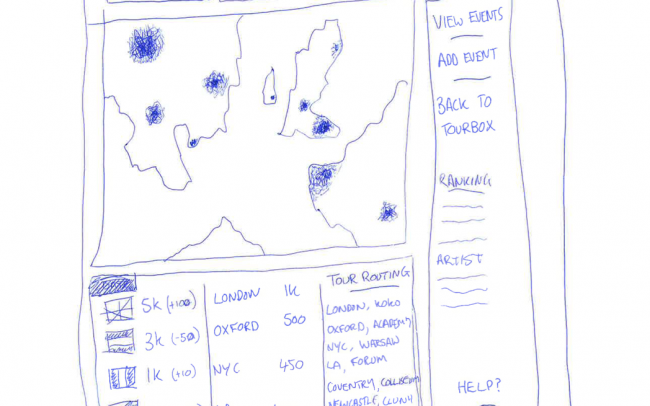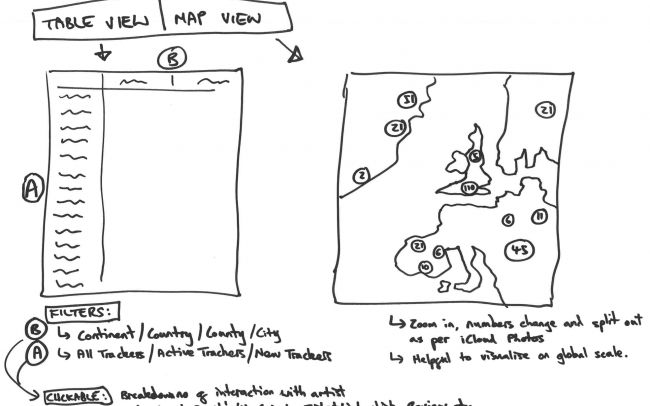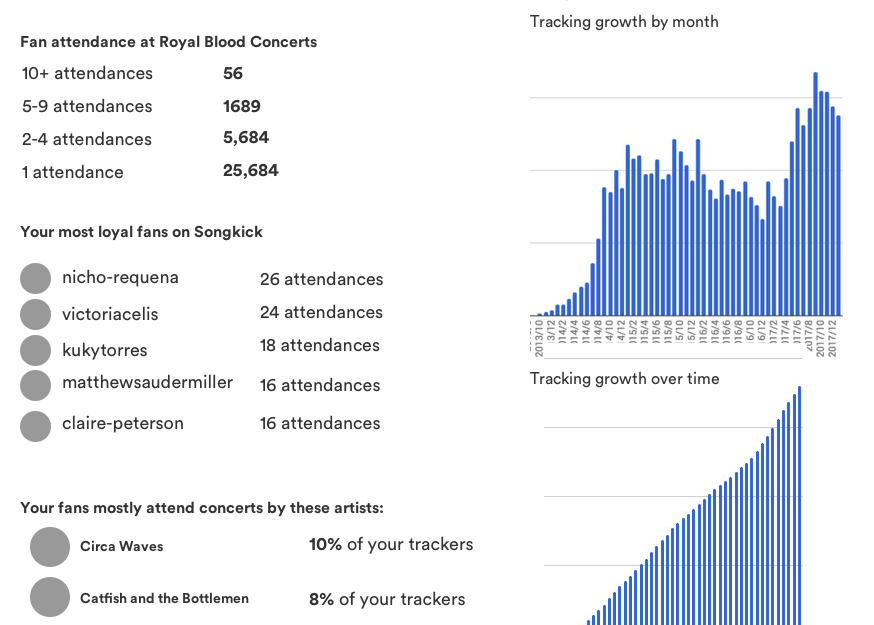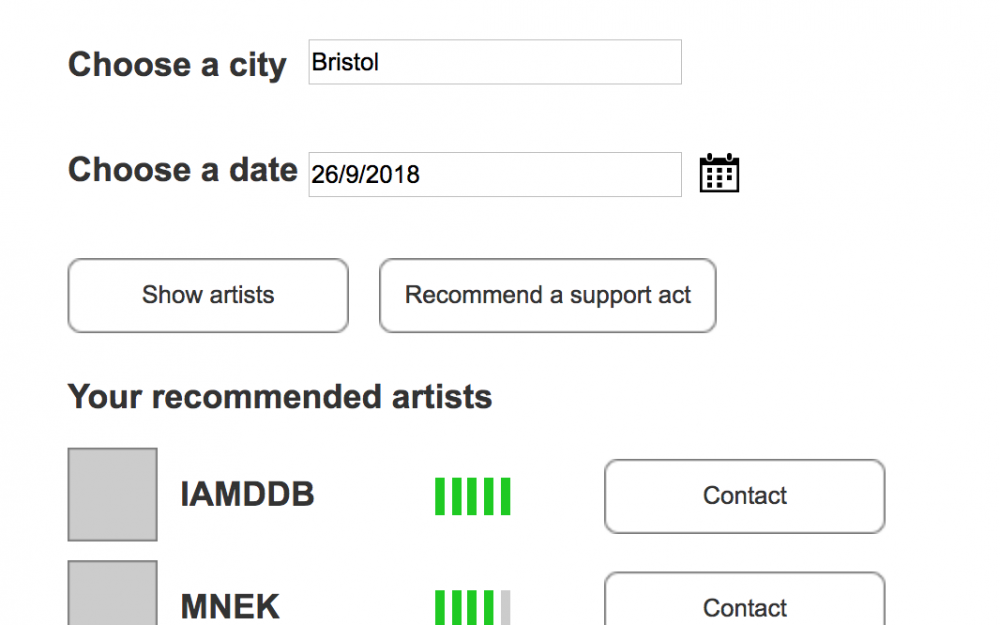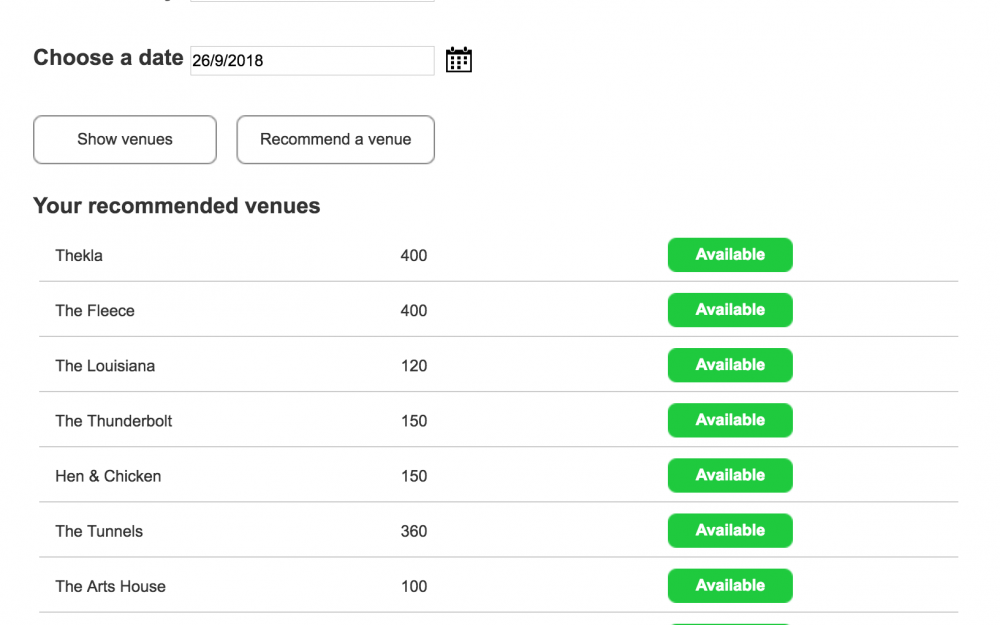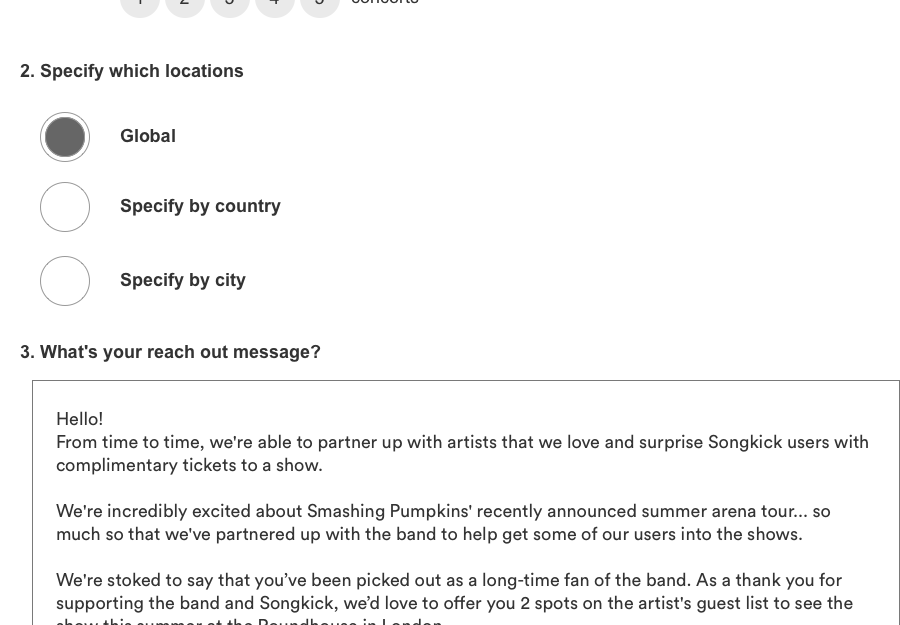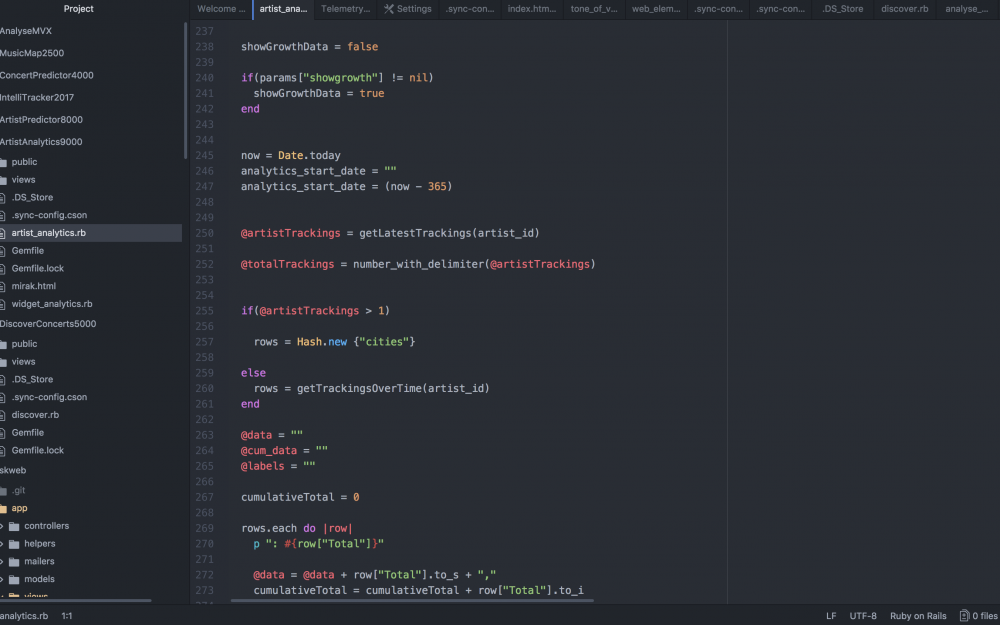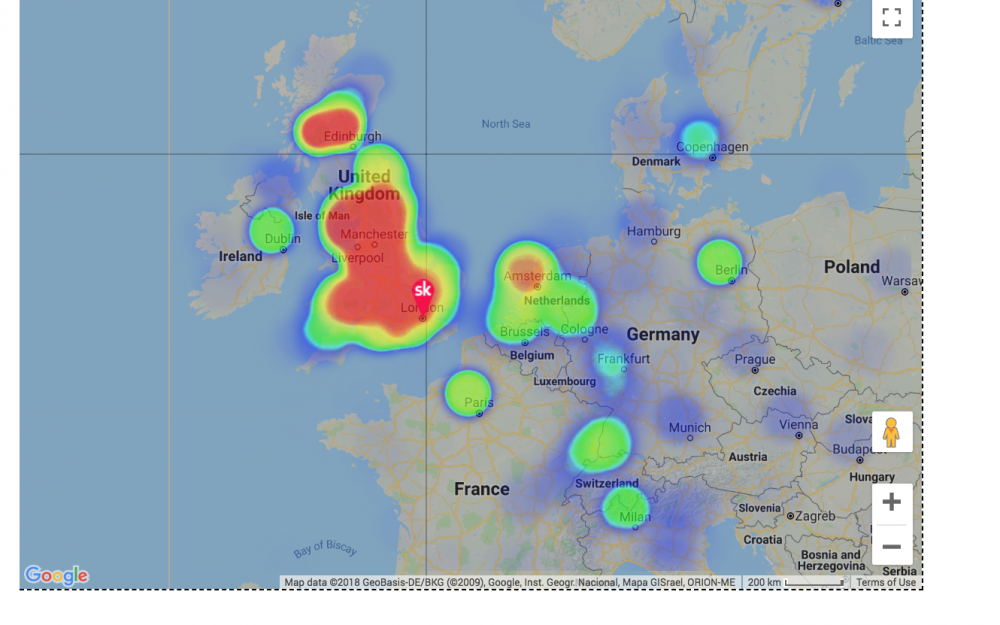In Q1 2018, I led the design and research of a new artists insights product which helped thousands of users across the music industry understand the value and impact of Songkick’s marketing and the power of its data. In 3 months, we had developed a brand new product, interviewed over 40 users, identified 16 jobs-to-be-done and had strong feedback that users were getting value out of the product.
Background
Thousands of users across the music industry (artists, managers, labels, promoters) use Songkick Tourbox, a product for allowing teams to manage their tour dates and artist presence on Songkick.
Research from interviews with users in 2017 identified that teams often didn’t understand the value Songkick provided and the product did not provide any feedback on their tour marketing efforts.
In Q1 2018, we set out to build an Insights product into Tourbox to help convey the value Songkick was delivering and enabling some of the needs we’d identified. In tandem, we ran further qualitative and quantitative research to identify other needs and areas of opportunity.
I led the design and research of the new product which encompassed a design team of 3 and a product development team of 12.
Kick-off & team ideation
The whole team were invited to an ideation session based on having the context to date. The activities involved:
- Identifying all the data points we had access to which would be relevant,
- Coming up with some insights ideas based around the data we had.
- Having the team express what they wanted to achieve in this project.
Discovery: research & identification of user needs
A significant amount of research (both quantitative and qualitative) was conducted throughout the project, with a large focus on discovery of needs at the earlier stages.
Initial survey polls
Initially, we ran surveys on Tourbox (using Hotjar within the product itself) to identify which areas (from the team ideation sessions) resonated best with the users.
There was a good distribution of interest with audience insights and analytics accounting for 60% of users.
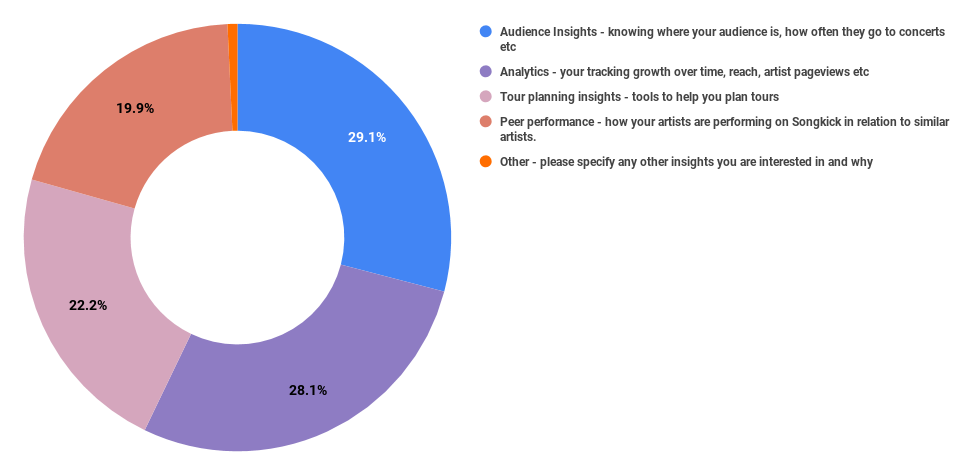
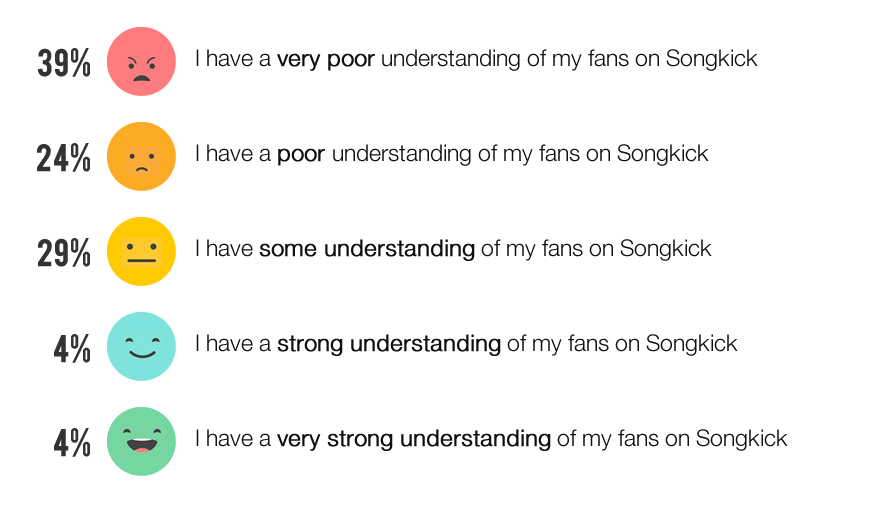
We identified that 60% of users said they had a poor or very poor understanding of their audience on Songkick and only 8% had a strong understanding of their audience.
Artist interviews
We held interviews (using contextual inquiry methods) with 14 teams across the music industry in the US and UK. The interviews were designed to understand the daily working habits of users, and what success in their roles looked like for them.
We analysed the research as we went along, identifying 16 Jobs To Be Done spread across 4 main areas:
- Touring: helping artists in tour planning and tour marketing.
- Fan understanding: helping artists understand their fans & audience on Songkick and looking to reward fans.
- Artist development: helping teams grow artists career and ‘break artists’
- Marketing: the marketing of other artist products (excluding live music)
Interview script
The interview script was designed with 15 open questions across 3 areas of inquiry. Due to the time constraints of users, the script was flexible to allow for the most important questions to be prioritised and the flow to be adjusted in various circumstances.
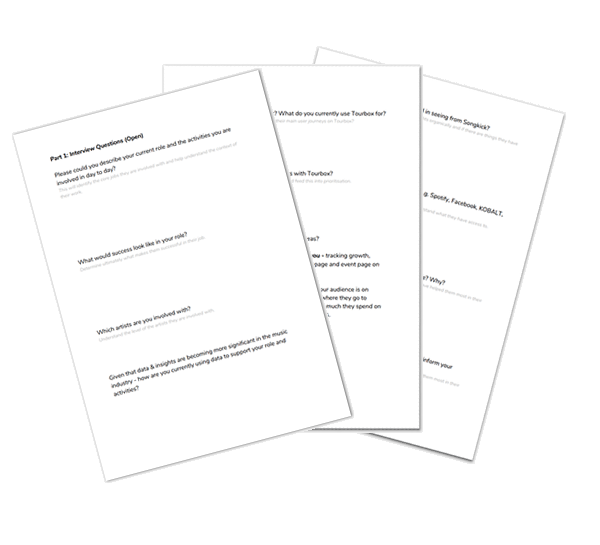

Interview locations
The interviews were carried out in UK & Europe (by myself and esteemed Product Designer Elliot Hancock) and in the US by our colleague Meredith Croy (Director of Artist Services). Interviews outside of London were done by phone / video conference to keep travel costs down.
Design
Team Design Studio
For some of the early features, we ran a design studio with the team with the aim of focusing on helping users understand where their followers were based.
This provided some instant ideas which we could get qualitative feedback from with our users of the product through polls.
Concepting
Lorem Ipsum is simply dummy text of the printing and typesetting industry. Lorem Ipsum has been the industrys standard dummy text ever since the 1500s, when an unknown printer took a galley of type and scrambled it to make a type specimen book.
Interactive data prototypes
In order to better understand some of the stronger ideas, coded prototypes were built using real artist data in order to better understand the opportunity. This was built using Ruby and the Songkick Web Services and database access. I have built up a real data prototyping framework over the years at Songkick which enables us to quickly test these ideas.
Job-To-Be-Done: When I am planning a tour, I need to know where my fans are so I can choose locations which will have demand
The first major feature allowed artists to see where their audience on Songkick were at a glance by using a heatmap. They can then view more detailed audience information in an adjacent table.
Broken down by city, this showed whether artists had ever played there (exposing opportunities for new tours) and what growth they have had in a given market in the past 12 months. This information has since been crucial to helping artists with their tour planning.
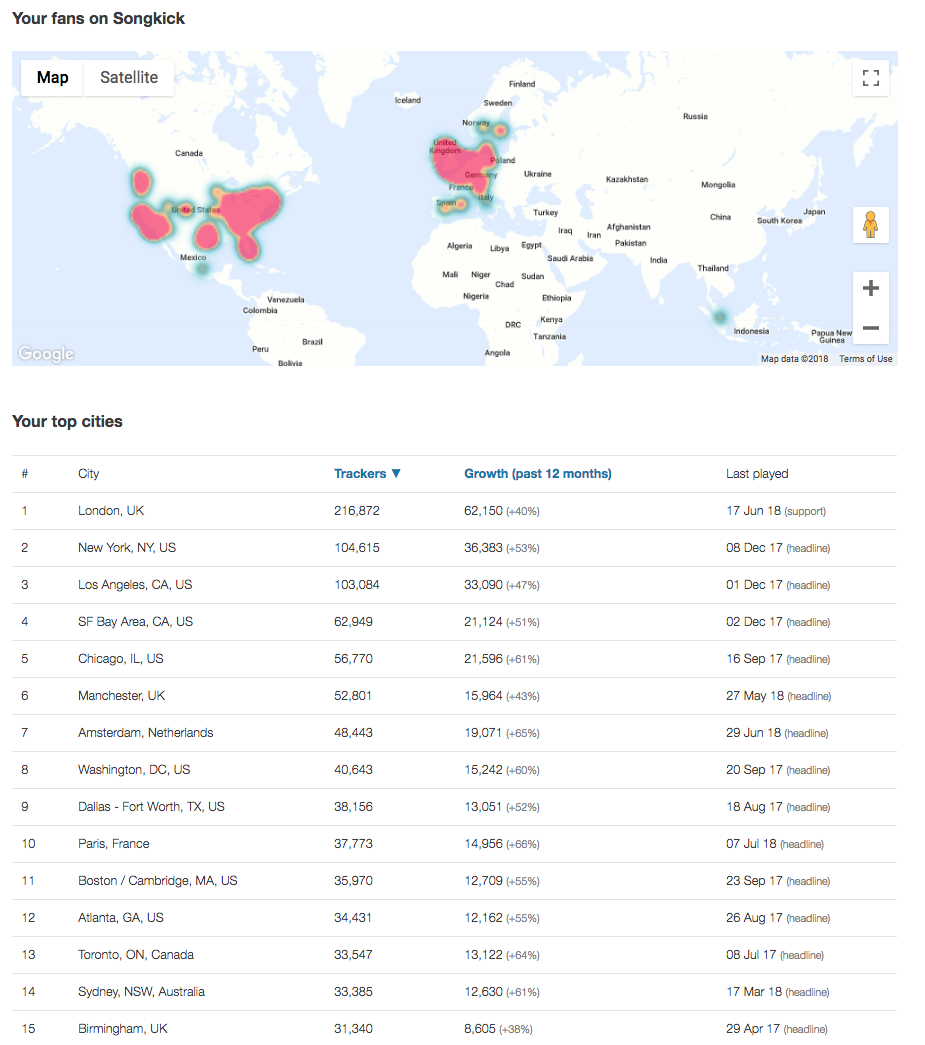
Above: Screenshot of the audience heatmap and data table which shows artists where they have their most fans, largest growth and if they have ever played there.
Job-To-Be-Done: When I am breaking artists, I need to understand if they’re growing so I can persuade platforms to feature my artists
Based on the need to allow users to track their artists growth on Songkick, we allowed users to be able to see their month-by-month followers on Songkick which can be crucial information to pitch to mainstream radio and major playlist editors on streaming services such as Apple Music & Spotify.
Job-To-Be-Done: When I am marketing artist products, I need to know where my fans are so I can do targeted advertising with a better ROI
From research we’d seen that teams were trying to find affinity artists whom they could send related product information to. We used tried various approaches including using attendance data to figure out which artists had affinities with each other and were then able to expose this information.
We initially wrote some scripts to generate this information, and then we sent it for feedback to our Beta Group of Artist managers which included feedback:
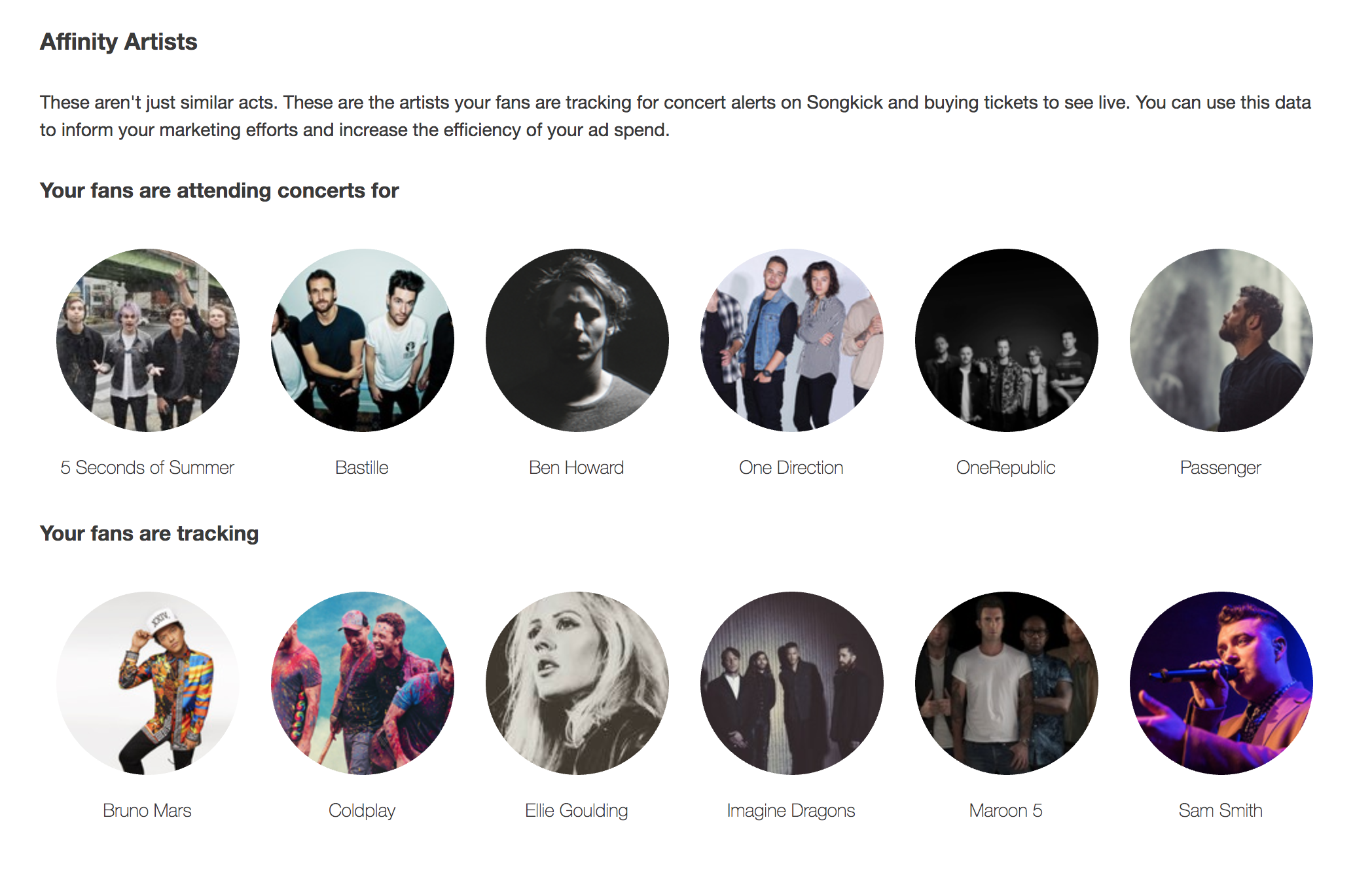
Impact
The first releases began at the end of January 2018 and were rolled out in each subsequent sprint. Our goal had been to get 40% of artist managers using the new products in a 2 week window which was successfully achieved.
However, further research and observation showed that in order to maintain this level of usage, artists would need to be pushed insights as their jobs are such that they do not have the headspace to manually check platforms.
Qualitative feedback
In order to get more qualitative feedback from the actual impact on users, I organised two incremental bits of research. We ran another survey on the product to compare users understanding now versus before the project. Artist teams who said they had a Strong or Very Strong understanding had increased 2 or 3 times.
In addition, I reached out (via email) to various managers who responsded to dig into why they had given a paticular response (both positive and negative cohorts).
